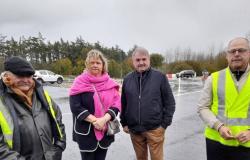Sceye, an aerospace startup, is partnering with NASA and the US Geological Survey (USGS) for a project to monitor natural disasters from the stratosphere. Thanks to a platform powered by solar energy and capable of carrying several sensors, this collaboration aims to collect precise and real-time data to better anticipate and manage climate risks. With operating costs much lower than those of satellites, this technology promises to redefine approaches to managing fires and storms.
High altitude surveillance and economic efficiency
The project relies on Sceye’s High Altitude Platform System (HAPS), a platform capable of rising up to 60,000 feet (approximately 18 km) to continuously observe the Earth.
Compared to satellites, HAPS has much lower costs: a single platform costs less than $10 million, compared to tens of millions for satellites requiring rocket launches.
As explained by Mikkel Frandsen, founder of Sceye quoted on Reuters, their system is “about ten times cheaper than other solutions, which consist of using Cessna planes that take off and land and are piloted by a human”. In contrast, the HAPS can take off in half an hour to reach its position and operate without human intervention, providing a sustainable and more accessible solution.
Sceye recently announced a fundraising valuing the company at $525 million. This funding should enable it to launch commercial operations next year, thereby consolidating its position in the Earth observation market.
The HAPS platform is designed to carry multiple sensors at the same time, which further reduces costs, since a satellite integrating this many sensors would require resources and an expensive launch.
Advanced environmental monitoring using hyperspectral sensors
The partnership with NASA and USGS aims to use hyperspectral sensors to monitor extreme climate events in detail. Equipped with sensors capable of capturing precise and varied data, the HAPS platform allows in-depth analysis of forest fires, storms and seismic movements.
Jonathan Stock, director of the USGS National Innovation Center, emphasizes that the ability of this platform to embed various sensors makes it a unique solution for environmental monitoring.
The platform can also remain in place for an extended period of time, providing continuous data, which improves the accuracy of weather models and strengthens risk anticipation.
The information collected in real time by the HAPS can thus help predict the evolution of a fire or storm. By being located at an intermediate altitude between satellites and planes, the Sceye platform makes it possible to collect detailed data while being less affected by the vagaries of Earth’s orbit.
This technology makes constant monitoring possible and adaptable to the needs of organizations responsible for crisis management, allowing them to react quickly and with more precision.
Towards an international and ecological deployment
Powered by solar energy, the Sceye HAPS therefore constitutes an eco-responsible solution. This technology operates autonomously, without the need for refueling, and reduces the carbon footprint by limiting the rocket launches required for satellites. This energy choice underlines the partners’ commitment to sustainable solutions in climate management.
Solar platforms like that of Sceye could therefore be used more widely and deployed in sensitive areas in order to monitor climate change, thus reducing dependence on traditional satellites.
NASA and USGS, in cooperation with Sceye, are already planning to extend this model to other regions of the globe, for expanded use of HAPS platforms. With this technology, other countries and organizations could access real-time climate monitoring, at lower cost and with reduced ecological impact.






